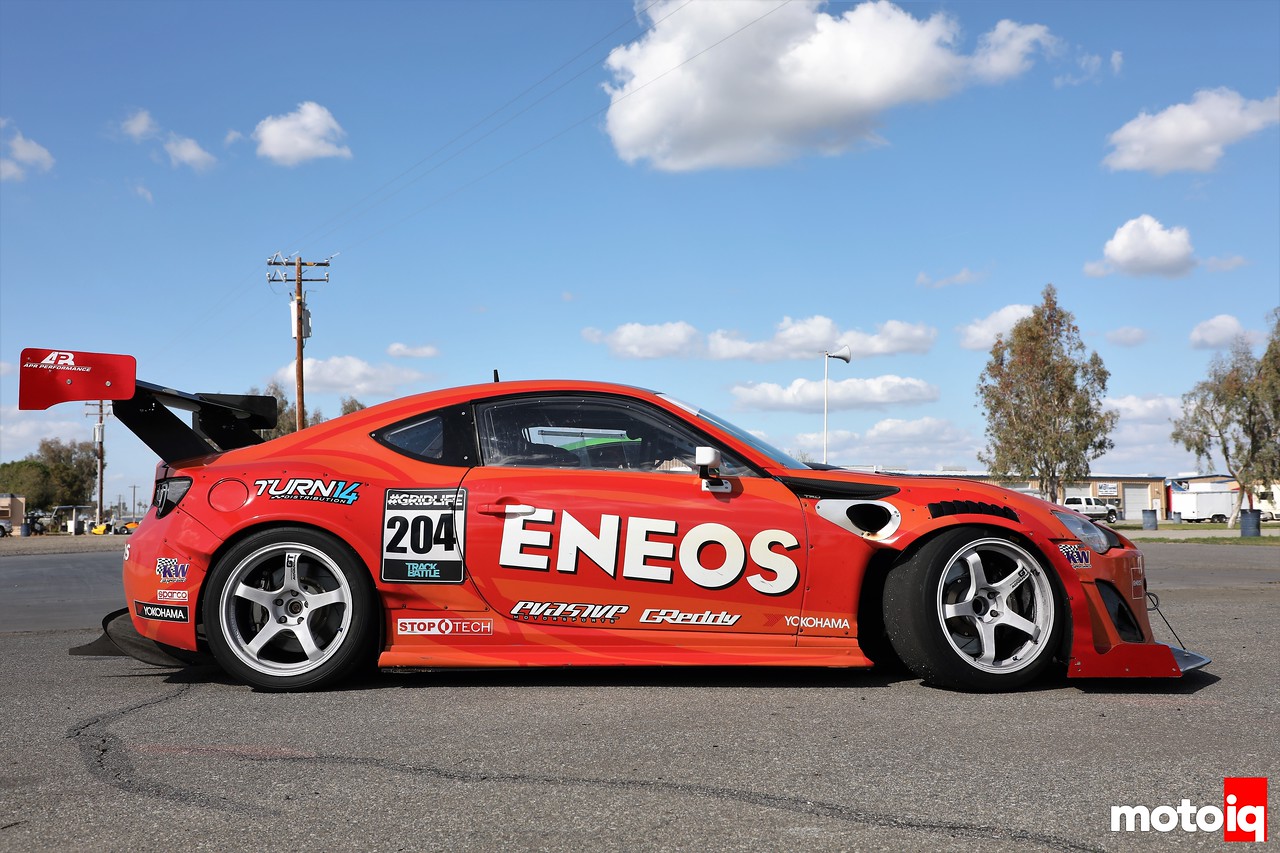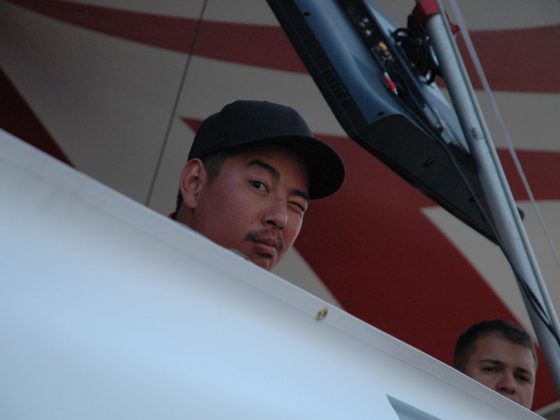
In addition to the Hydromat, a Radium Engineering surge tank assures that the 2JZ will never starve for fuel no matter how high the G-loads are! An Aeromotive brushless high-pressure pump is located inside the surge tank.

An Aeromotive bypass type regulator has multiple ports to feed the fuel rail from both ends while having a short bypass loop to the fuel cell.

The transmission in the Toyota 86 is notoriously weak even with the small FA20 and has been replaced with a Samsonas dog geared 6-speed that is sequentially shifted. The Samsonas can easily take the 2JZ’s 1000 hp. A Tilton triple disc clutch and lightweight flywheel are used.

The rear end is an IS300 part that is fortified with an OS Giken 1.5 way limited slip differential with a 4.1 final drive and a Greddy large oil capacity rear cover that is plumbed for a cooler. A Parts Shop Max differential raising kit moves the diff up 20mm to reduce the axle CV angularity which greatly improves axle life.

A Greddy cooler is used to control the differential temperature.

A Tilton Engineering gear oil pump circulates the differential fluid to the cooler.




8 comments
Great build and write up. One small note is that the vertical strakes on a diffuser limit spanwise flow. Without them, the air will tend to move laterally across the diffuser surface. Obviously, that reduces the effectiveness of the diffuser. Of course, there’s a small drag penalty, but it’s more than made up for in the aero efficiency.
Fun fact: These strakes were first developed for the swept wing jet fighter aircraft. Because the ailerons are generally located near the wingtips (for the maximum moment arm) the control surface on swept wings was losing ability due to boundary layer separation. This was because the swept wing caused the air to turn outward (spanwise flow.) By introducing a wing fence (vertical strake projecting above boundary layer) you limit spanwise flow and the aileron remains effective, so even under extreme yaw angles.
We did it mostly to try to keep the flow attached with a less than optimal angle. We used a pre-made diffuser to expedite stuff. We might redo it later if there is time and money.
Yeah, it’s difficult to know if the flow is staying attached or separating. Obviously, you can’t use wool tufts, because gravity.
Maybe you could make your own ‘flowviz’ paint, but I think that gravity would make that difficult, too.
Not many good options without a wind tunnel. And no reason to spend $$$ unless you know it’s going to work.
Also, the front end should always see the bulk of the aero effort. If the front isn’t working properly, then it won’t matter what you do at the rear. The flow will be turbulent by then, anyway.
Best of luck on Pikes Peak.
page 5 pic 1
it looks like there’s what looks like a delrin bushing on the knuckle between where the tie rod and LCA connect to it. From what I can tell its between 2 rigid non-moving parts… and its not in the pics of the kit on the Wisefab website… whats its purpose?
It’s a steering stop.
oh i see, that makes sense…
I was low key hoping to see a double wishbone conversion similar to what the HKS time attack car did
Not legal for our events!
that makes sense… I didn’t really consider that